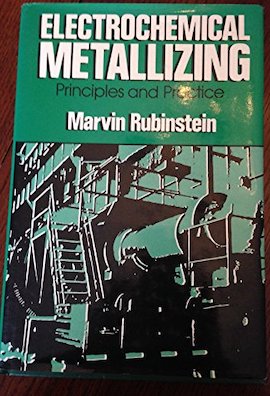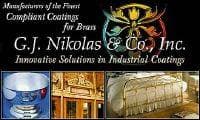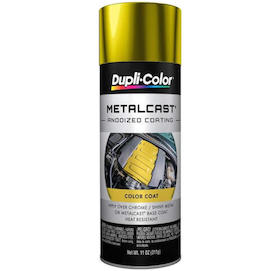
Curated with aloha by
Ted Mooney, P.E. RET

The authoritative public forum
for Metal Finishing 1989-2025

-----
Brush anodizing / Anodizing Pen for Touch-ups
Q. Hi I'm Bob Ritter, I'm in Knoxville Tennessee and have been doing metal work since 1972. I have worked in asme code pressure vessels and heat exchangers where we polished and then electropolished large diameter nickel clad heads. I'm used to working with the electricity and and hand electropolishing small stuff. I'm currently doing a lot of copper work that I use acids on most of the time without electricity. What I am interested in is taking like a 2 ft by 3 ft sheet of aluminum 1/8 in thick and anodizing it. I'm wondering if I can lay it flat like the article above and anodize it one of two ways. Either etch the whole sheet and then hand paint in the dies or anodize each color one at a time. I am wanting to do several different sheets like this. I thought if I etched the whole sheet first and then masked off areas and put the color in that I could do it that way. Any help you could give me would be greatly appreciated.
Bob T Ritter- KNOXVILLE Tennessee
March 18, 2021
A. Hi Bob. No picture was received ... please e-mail it to mooney@finishing.com for posting here.
I think it's possible to do either of those or several other techniques. Two color anodizing is explained in thread 48706 and there are several pictures of beautiful work there. Hand painting is explained and illustrated in thread 60640. There is also "splash anodizing" which you can search for on our site; it was very popular for paint ball guns so I'm sure Google has lots of pictures.
As a matter of semantics when you look for supplies though, if you are trying to hand paint or silk screen you use "anodizing inks"; these are much more saturated than the "dyes" used for immersion.
Unfortunately I think you're going to find that doing this well is a protracted learning experience and much harder than most people would think :-)

Ted Mooney, P.E. RET
Striving to live Aloha
finishing.com - Pine Beach, New Jersey
⇩ Related postings, oldest first ⇩
Q. I have recently heard rumor of an anodizing pen for touch-up of anodize. Does this exist and where can I get one?
Our parts are anodized with type II sulfuric with black lightfast dye and R5 bright dip. Our parts are also highly cosmetic and therefore the touch-up would need to match very well and of course not be removable with acetone ⇦ this on eBay or Amazon [affil links] Warning! highly Flammable! or alcohol.
Thank you for your input!
Robin Nelson1998
Electrochemical Metallizing by Marv Rubinstein

on AbeBooks
or eBay or
Amazon
(affil links)
A. Hi Robin. I find it distressing that many anodizing shops that I've visited keep black Magic Markers on hand for touchups of rack marks, etc. I'm sure that some of their customers permit this with full knowledge. But I'd bet that many customers have no idea that it happens, or are far enough removed that they have given permission without any real understanding of what they've assented to.
"Brush anodizing" would be an alternative, but perhaps prohibitively priced and not decorative enough. This "anodizing pen" is probably another term for a brush anodizing kit.

Ted Mooney, P.E.
Striving to live Aloha
finishing.com - Pine Beach, New Jersey
A. You would have to be a lot better than I am to ever get an acceptable touch up from dyed type 2 with brush anodizing. It is excellent for some local applications, but it is nearly impossible to satisfactorily use it for critical cosmetic touch up on a commercial basis.
James Watts- Navarre, Florida
![]() I'm sure you're right, Jim. I've never tried it myself, and the application here is on an R5 bright dipped part, which probably has to be perfection.
I'm sure you're right, Jim. I've never tried it myself, and the application here is on an R5 bright dipped part, which probably has to be perfection.

Ted Mooney, P.E.
Striving to live Aloha
finishing.com - Pine Beach, New Jersey
Q. I have tried to find a supplier for an anodizing pen and came up empty. Could you help me out with this. Somehow I must be asking it for the wrong thing.
Chris Szepaniak- Waterloo, Ontario, Canada
2000
A. Hi Chris. We can't suggest vendors except our supporting advertisers (huh? why?), but I don't think the term "anodizing pen" is as widely used as other terms. Try googling "brush anodizing" and you'll find suppliers. Good luck.

Ted Mooney, P.E.
Striving to live Aloha
finishing.com - Pine Beach, New Jersey
Multiple threads merged: please forgive chronology errors and repetition 🙂
Q. Is there a way to touchup a black anodized part(sulfuric) that has had the finish worn off in a spot or two? I don't want to re-anodize the whole part again if it can be avoided.
Jimmy Dickard- Easley, South Carolina, US
2003
A. It depends on what specs, if any, you have to meet. And it depends on what wear resistance you need in the repaired area. But, believe it or not, some people accept touching up with a black indelible marker.

Ted Mooney, P.E.
Striving to live Aloha
finishing.com - Pine Beach, New Jersey
A. Theoretically YES, practically NO. You will have to clean off, probably mechanically, all residual anodic oxide, make contact, deox briefly in Nitric Acid (some proprietary deox will work, others will attack the other anodized and dyed areas), put back in the anodizing tank and set the voltage for the alloy, redip in dye, seal in plain hot water.
I have done it, it is difficult.

Robert H Probert
Robert H Probert Technical Services
Garner, North Carolina

A. A possible solution may be to brush anodize the bare spots. Connect the positive wire to the work, the negative wire to a cathode wrapped in felt,(ensuring the usual electrical safety issues are addressed)then wet felt with electrolyte, and brush over the bare spots. You must take into account the thickness of the felt, due to the possibility of arcing. This method is used to colourfully anodize titanium, so maybe it could be of some use to you.
Apparently a well bristled chip brush will hold a nice little piece of cathode up inside the centre of the bristles, using the power lead as a fastener. Trim bristles to appropriate length, allowing a decent gap.
Good luck!
Jeff Swayze- Kelowna, B.C., Canada
Multiple threads merged: please forgive chronology errors and repetition 🙂
Q. We are home builders in Northern California. Our home entry doors are 3' x 8' solid oak front doors, with glass sidelights. Each door unit comes as a pre-assembled unit with a brass anodized threshold. During the course of construction, on some homes, the anodizing on the threshold gets tarnished, or etched by acids in the exterior finish. I need a way to repair these thresholds, in place. Any suggestions would be greatly appreciated.
Marvin BrocchiniHome Builder - Manteca, California, USA
2004
A. Hi Marvin. There is no simple in-situ repair because anodizing is a factory applied electrochemical process that requires many steps: preparation, creation of the porous anodized film, dyeing, sealing of the film to keep the dye in and dirt out, etc. It might be well worth it to cover these thresholds with plastic or tape until everything else is done because repair is so difficult.
However, three thoughts...
First, it might be possible to have a skilled brush plater do brush anodizing on site, but this is more for functional purposes than decorative color matching.
Second, it is not uncommon for anodizing shops to use magic markers to cover very small spots called rack marks; it is possible that a brass colored magic marker could be found that would do a "passable" job.
Third, an approach that is a bit better than a magic marker is a chromate conversion coating of the discolored area. Suppliers of metal finishing chemicals offer "Iridite Pens" or "Alodine Pens" (Iridite and Alodine are brand names of chromate conversion chemicals), which might be reasonably close to the brass color and which would afford some measure of corrosion protection to the aluminum.
Good luck.

Ted Mooney, P.E.
Striving to live Aloha
finishing.com - Pine Beach, New Jersey
A. Hello,
Some paint companies make coatings that match anodized finishes. If you have quite a few window frames to do and the marker doesn't cut it, you might want to look into a sprayed finish.
Jake KochG. J. Nikolas &Co.,Inc.
Bellwood, Illinois

2004
Q. I am design engineer currently working on test equipment, manufactured in low volume. I've specified a component made from Aluminum alloy which requires a mild level of corrosion protection. The component is approx. 150 mm dia. x 150 long. I have specified anodizing as it suits the manufacturer. However one feature of the component has been produced oversize. The manufacturer wants to strip the anodizing, re-machine the feature, and re-anodize. Could he re-machine the feature and then locally (brush?) apply a chromate conversion coating such as Alochrome? Can Alochrome be brushed on and does it affect the surrounding anodized areas?
Iain MorganDesign Engineer - Barnstaple, Devon, UK
2004
Treatment &
Finishing of
Aluminium and
Its Alloys"
by Wernick, Pinner
& Sheasby

(note: this book is two volumes)
on eBay or
AbeBooks
or Amazon
(affil links)
A. Generally speaking, you may rework only one portion, and mask the part with platers or electricians plastic tape, and brush/mop chem film the surface. Problems are the possibility of breaking portions of the anodize where you apply clamps and you will probably have a chipped edge where it is removed. Also, the quality of the chem film will probably not be as good as a regular tank application as it is somewhat harder to get a uniform cleaning/etch of the aluminum.
James Watts- Navarre, Florida
A. It seems like a simple "brush Alodine" repair, especially if corrosion resistance is not driving the design. Alodine (or chemical conversion) can be readily brushed or swabbed on.
Terence Savasaerospace- Irvine, California
Multiple threads merged: please forgive chronology errors and repetition 🙂
Q. I want to know if there is any possible way of anodizing separate areas of a large sheet of aluminium without having to fully immerse it in a tank? Can I brush the solutions on and rinse them off out side with a hose pipe? If you leave the anodizing solution on longer will it have the same effect as it would if heated?
Emma BouldingArtist - Leeds, Yorkshire, England
2004
A. It isn't clear to me from your letter whether you realize that anodizing is an electrolytic process rather than a chemical treatment, Emma. It is, however, possible to "brush anodize" aluminum. The "brush" in this case is not a typical paintbrush, but a gauze covered electrode. Anodizing is done at ambient temperature or below, so there is no need to heat the solution. You need to talk to a supplier like Gold Touch [a finishing.com supporting advertiser] or Sifco, and also to realize that some skill at the process is vital so you may need a lot of practice.

Ted Mooney, P.E.
Striving to live Aloha
finishing.com - Pine Beach, New Jersey
Electrochemical Metallizing by Marv Rubinstein

on AbeBooks
or eBay or
Amazon
(affil links)
A. Brush plating is a misnomer. It is actually the electrodeposition of a metal by applying a current through an electrolyte whilst rubbing the workpiece with a saturated pad (also called a tampon) that has the electrolyte being pumped through it. The technique is also known as "selective plating" or "tampon plating". Anodising is not the same as electroplating as instead of reducing metal ions to a metal, you are oxidising a metal (aluminium) to aluminium oxide. However, in theory it should be possible to anodise aluminium, but one of the important things about anodising is to keep the temperature low; this is not very easy to do in brush plating. The best company in the UK for this is Selectrons, although they MAY now be known as Sifco; either way, they are based in Redditch, West Midlands.
Trevor Crichton- UK
A. re: "I want to know if there is any possible way of anodizing separate areas of a large sheet of aluminium without having to fully immerse it in a tank?"
Disregarding brush anodizing for a moment and pretending your sheet of aluminum is laid horizontally like a tabletop ... you can mask off the area you want anodized, place a tube slightly larger than the area you want anodized over top of it (picture a glass with no bottom sitting on your tabletop over the area to be anodized)and have some kind of seal (silicon caulk) at the bottom of the tube..fill tube with electrolyte and commence bath anodizing in tube container. Now you can selectively anodize portions of large sheets with no huge bath but still get the ease of uniformity. You could also use this process on a vertical sheet with more difficulty.
Jason Aube- Flint, Michigan
A. Jason, yes it can be done, but you need to know what you are doing and what you are handling. It is not something that should be done in the home because the chemicals are very hazardous.

Trevor Crichton
R&D practical scientist
Chesham, Bucks, UK
A. Yes that is true Trevor. I get caught up in the "could" aspect of questions and tend to forget the "should" aspects. Emma, as with many of the processes discussed on this site there are health risks involved. Anodizing involves a risk of serious shock, hazardous chemicals, dangerous fumes, strong acids, etc. not to mention the strict environmental guidelines. If you choose to do it yourself, do a lot of researching and please be careful.
Jason Aube- Flint, Michigan
![]() Thanks for the warnings, Trevor and Jason!
Thanks for the warnings, Trevor and Jason!
Public forums are akin to "Hints from Heloise" or "Advice to the Lovelorn" columns in newspapers: while the response is labeled as being directed to one specific person, it's actually read by, and potentially used by, thousands of readers, from third-graders and post-docturals in advanced research labs. So we don't want to censor out answers which may be just exactly what a sophisticated & well-equipped reader is looking for, but we do need to warn people that just because an approach is technically doable does not means it's safe or should be done casually.
Luck & Regards,

Ted Mooney, P.E.
Striving to live Aloha
finishing.com - Pine Beach, New Jersey
A. Emma,
Hi, there are definitely artistically viable ways of treating aluminium films to accept dyes as I have some prints using this method that only cost a fiver. Why exactly do you want to anodise the aluminium? If it is to accept a dye then there could well be an etch type treatment that could be applied as a wet chemical without needing the expensive hazardous electrochemical aspects of true anodising.
Also worth considering would be anodising the whole sheet and removing the anodising with a phosphoric/chromic acid mix. This might enable you to purchase a sheet already anodised and work backwards. Laser etching might be a good thing to look up all my mountain bike bits have logo's laser etched on.
Regards,
- Leeds, England, UK
2007
Q. I'm a project manager on a new construction site. I just had a subcontractor install a bulkhead off the wrong mullion at a curtain wall. This happened on 3 floors. Is there any way to fix the holes in the clear anodized aluminum mullions? Any suggestions would be helpful.
Bill Fox- Indianapolis, Indiana, USA
August 21, 2017
Q, A, or Comment on THIS thread -or- Start a NEW Thread

